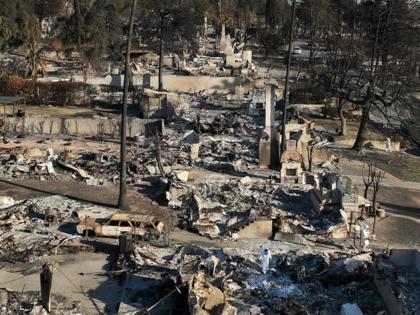Wildfire victims file more than 4,400 claims with California's FAIR Plan, home insurer of last resort
Published in News & Features
LOS ANGELES — More than 4,400 fire-affected homeowners in Los Angeles County have filed insurance claims with the state's insurer of last resort — the California FAIR Plan.
That's enough to kick the plan's strained finances further into crisis mode, increasing the chances that homeowners statewide will see their insurance costs rise whether they live in a fire-danger zone or not.
FAIR provides insurance coverage to homeowners who can't find an insurer to offer them a policy because of excessive fire risk. FAIR also provides lower cost but much more restrictive policies to those who can't afford going rates.
But FAIR is operating with a thin base of assets, with only a few hundred million dollars in its coffers. Claims submitted to FAIR thus far appear to top $900 million, the threshold at which FAIR must turn to reinsurance to cover its costs.
Reinsurance is, at root, insurance on insurance. It provides cash when an insurance company becomes overloaded with more claims than it had planned for. FAIR reinsurance taps out at $2.6 billion.
As of January 28, the FAIR Plan had received more than 3,200 claims for damage caused by the Palisades fire and over 1,200 claims for damage caused by the Eaton fire. The claims vary according to the type and amount of coverage and loss.
The ultimate cost of the L.A.-area fires is unknown, though CoreLogic, a property value analytics company, estimates property losses between $35 billion and $45 billion.
Pacific Palisades has one of the state's highest concentrations of FAIR Plan policyholders, with the insurer estimating its exposure in the neighborhood of $5.89 billion.
If reinsurance proves insufficient to cover FAIR's liabilities, state regulations require insurance companies to make up the difference. Those companies are allowed under the same regulations to raise rates on homeowners throughout the state to provide that money.
A bill working its way through the state Legislature could lessen the need for homeowner rate hikes to finance FAIR by selling bonds, thus transferring at least some of the costs from statewide homeowners to statewide taxpayers.
Companies such as State Farm and Allstate have stopped selling new homeowner insurance policies in California, while others have limited what they'll cover or increased the price of coverage — or both. According to the industry's Insurance Information Institute, California's insurers paid out $1.08 in claims and claims-related expenses for every dollar collected in premiums between 2013 and 2022.
As insurance companies retreat, the FAIR Plan has seen its policy count grow from a little over 200,000 in September 2020 to more than 450,000 as of last September. That has roughly tripled its total statewide loss exposure to $458 billion over the same period.
FAIR's cash on hand totals several hundred million dollars, and it's reinsurance coverage totals only $2.6 billion.
For decades, insurers in California were barred from using so-called "catastrophe models" in setting rates. Recent policy shifts from California's Department of Insurance now allow those models to be used.
Instead of largely relying on past claims data, the computer programs attempt to better refine an insurer's risk by taking into account a multitude of variables that affect a property's likelihood to suffer a loss.
Another major policy change allows insurers to charge California homeowners for the cost of reinsurance they buy from other insurers to limit their losses during huge catastrophes, such as wildfires and floods. This cost shift to policyholders is common elsewhere but a big change for California, where it will raise premiums.
©2025 Los Angeles Times. Visit at latimes.com. Distributed by Tribune Content Agency, LLC.







Comments